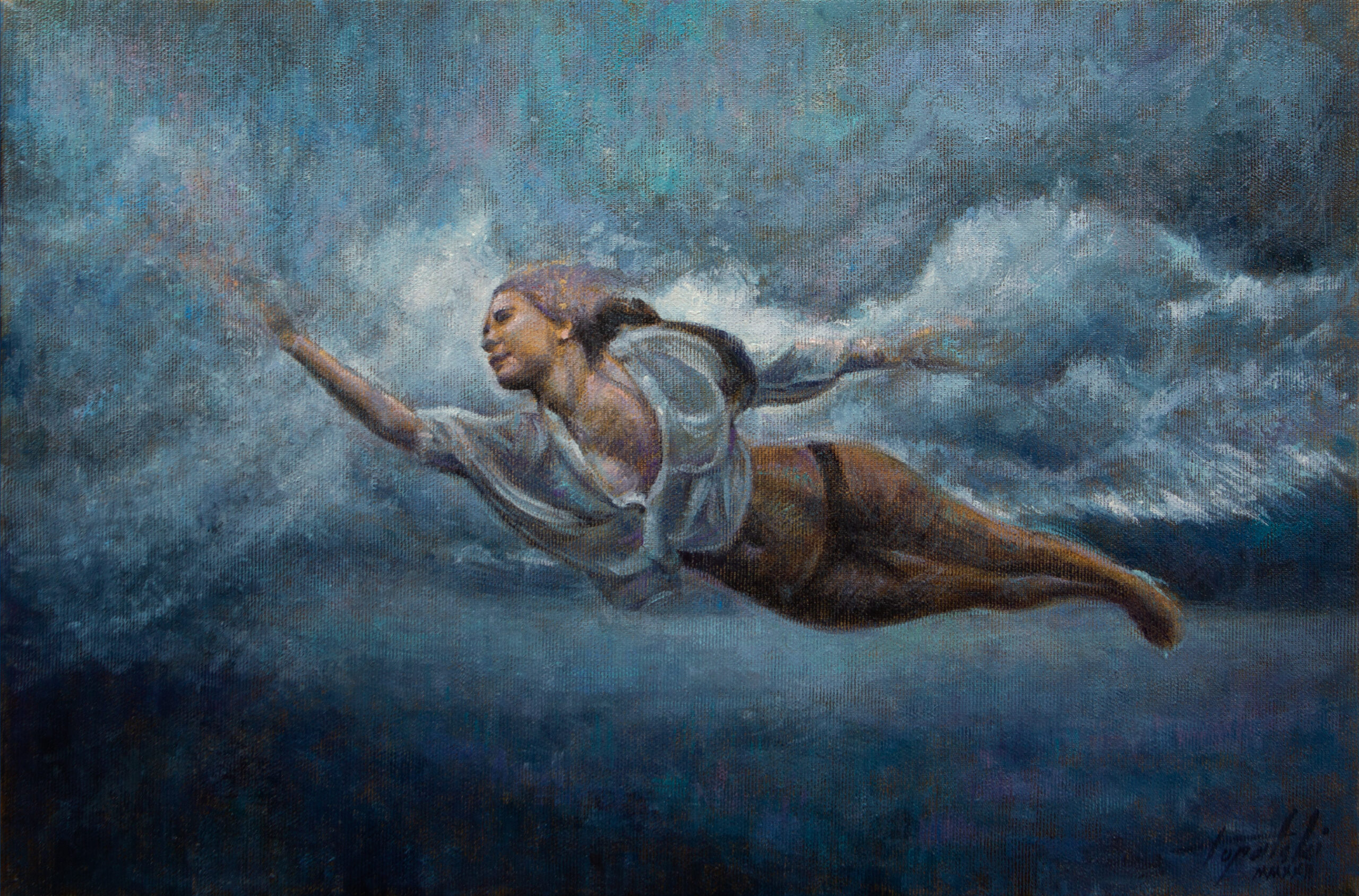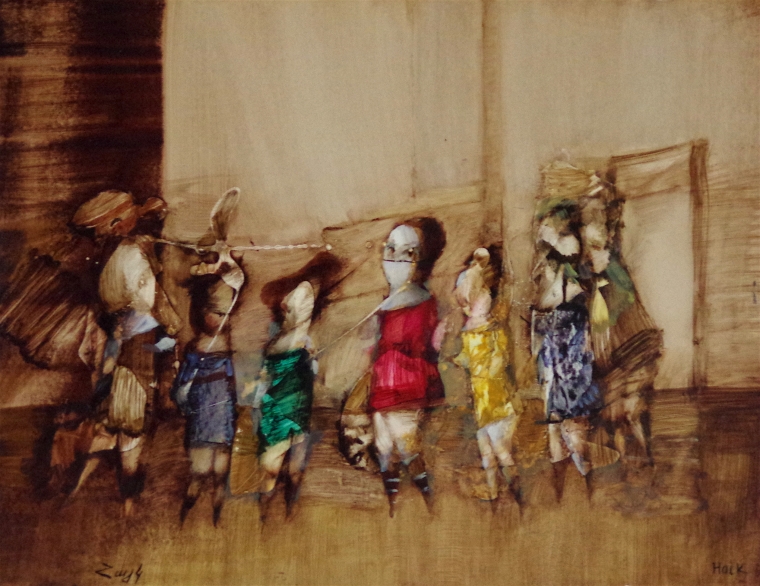The Influence of Figurative Oil Painting on Modern Art and Society
The Influence of Figurative Oil Painting on Modern Art and Society
Blog Article
The Advancement of Metaphorical Oil Paint: Comprehending Its Historical Value and Modern Interpretations
The development of metaphorical oil painting offers as a compelling lens via which to analyze the interaction between imaginative expression and historical context. Contemporary artists, attracting from this rich heritage, are currently reinterpreting the human figure in methods that test conventional stories.
Origins of Figurative Oil Paint
The origins of metaphorical oil painting can be traced back to the very early Renaissance in Europe, particularly in the 15th century. This period noted a significant separation from the flat depictions and inflexible forms particular of middle ages art. Artists began to check out naturalism, stressing the human figure and its psychological expression. The development of oil paint enabled better depth of color and detail, improving the realistic look and vibrancy of their work.

In this transformative period, numbers were commonly illustrated within contextually rich environments, showcasing not only their physical attributes yet also their emotional states. Pioneers such as Jan van Eyck and Titian used the medium's flexibility, employing layering strategies to achieve brightness and structure. This advancement promoted the portrayal of intricate textiles and the nuances of skin tones, adding to the development of portraiture and narrative scenes.
Furthermore, the Renaissance focus on humanism cultivated an appreciation for uniqueness, which in turn influenced artists to create even more vibrant and relatable figures - figurative oil painting. Consequently, metaphorical oil painting became a powerful lorry for storytelling and psychological interaction, laying the foundation for future creative movements and designs
Secret Historic Motions
Substantial historical activities have formed the evolution of metaphorical oil paint, each adding unique ideologies and techniques that increased the medium's opportunities. The Renaissance marked an essential moment, highlighting realistic look and the human kind, with musicians like Leonardo da Vinci and Michelangelo pushing the borders of anatomical accuracy and viewpoint. Following this, the Baroque era brought remarkable contrasts of light and darkness, exemplified by Caravaggio, who instilled religious styles with extreme emotionality.
The 19th century introduced Romanticism and Realistic look, where musicians such as Delacroix and Courbet challenged classical perfects, concentrating on individual expression and daily life. The advent of Impressionism even more transformed the tool by stressing the effects of light and color, bring about a separation from typical depiction.
In the very early 20th century, movements like Expressionism and Cubism redefined figurative painting with abstraction and the expedition of emotional depth. Each of these movements not only reflected the societal modifications of their times yet additionally laid the groundwork for contemporary analyses. The interaction between these historical movements has actually created an abundant tapestry of approaches and styles, affecting modern-day musicians in their quest of recording the human experience on canvas.
Strategies and Products Advancement

Throughout the Baroque period, strategies such as chiaroscuro and sfumato emerged, boosting the emotional vibration of figurative make-ups. Artists started to explore glazes and impasto, controling texture and brightness. By the 19th century, advancements like the use of pre-mixed paints in tubes reinvented ease of access, permitting artists to repaint en plein air and capture the fleeting results of light.
The 20th century saw the intro of artificial pigments and mediums, which increased the palette and changed the uniformity of oil paints. Furthermore, the expedition of new application methods, such as scheme knives and brushes of varying rigidity, additional diversified imaginative expression. Jointly, these developments reflect the evolving partnership between materials, methods, and the artistic vision fundamental in metaphorical oil paint.

Contemporary Analyses
Contemporary interpretations of figurative oil paint reflect a dynamic dialogue between tradition and innovation, where artists challenge established norms and explore diverse motifs. This advancement materializes in various methods, as modern musicians blend timeless strategies with modern ideas, commonly attending to social, political, and individual narratives.
Numerous professionals draw inspiration from historic works, yet they infuse their pieces with modern point of views, making use of the human form as an automobile for commentary on identification, culture, and gender. Artists increasingly explore abstraction, distortion, and mixed media, which enables a more comprehensive analysis of the figure and its context.
Furthermore, making use of vivid color schemes and unique structures usually offers to disrupt traditional seeing experiences, provoking essential interaction from target markets. This shift in focus prolongs beyond looks; it mirrors a growing understanding of the intricacies of human experience in an interconnected world.
As metaphorical oil paint remains to evolve, it remains an important medium for discovering the nuances of modern life, embodying both a regard for heritage and a dedication to progressive thought. The outcome is an abundant tapestry of expression that resonates with the complexities of the modern human problem.
Influence on Modern Art
The effect of metaphorical oil paint on contemporary art is extensive, as it has continually inspired a myriad of creative activities and methods throughout the 21st and image source 20th centuries. From Expressionism to Surrealism and beyond, the exploration of the human number has continued to be a central theme, allowing artists to share intricate feelings and narratives. This emphasis on figurative representation has actually led to a re-examination of conventional methods, leading to ingenious techniques that mix realism with abstraction.
Moreover, contemporary artists have actually embraced figurative oil painting as a method to resolve social and political problems, making use of the tool to test understandings of society, gender, and identification. The renewal of interest in metaphorical operate in recent years shows a longing for connection in a significantly electronic world, where human experience and feeling are vital.
Furthermore, the dialogue in between figurative oil paint and modern-day art appears in the jobs of musicians such as Kehinde Wiley and Jenny Saville, that make use of historic references while instilling their items with contemporary significance. Ultimately, figurative oil paint remains to shape and redefine modern-day creative expression, emphasizing its long-lasting relevance in the art world.
Conclusion
The development of metaphorical oil painting highlights its historic importance and flexibility across different imaginative movements. Eventually, metaphorical oil painting stays an essential tool for discovering the human experience, resonating exceptionally in today's electronic landscape.
The advancement of figurative oil painting offers as an engaging lens through which Related Site to analyze the interaction between creative expression and historic context.Significant historical motions have shaped the development of metaphorical oil paint, each adding unique viewpoints see this and methods that increased the tool's opportunities.As historical movements shaped the trajectory of figurative oil painting, the methods and products utilized by musicians have actually likewise undertaken substantial makeovers. figurative oil painting.The impact of figurative oil painting on modern art is profound, as it has continually inspired a myriad of artistic movements and methods throughout the 20th and 21st centuries.The development of metaphorical oil painting emphasizes its historical significance and versatility throughout different imaginative activities
Report this page